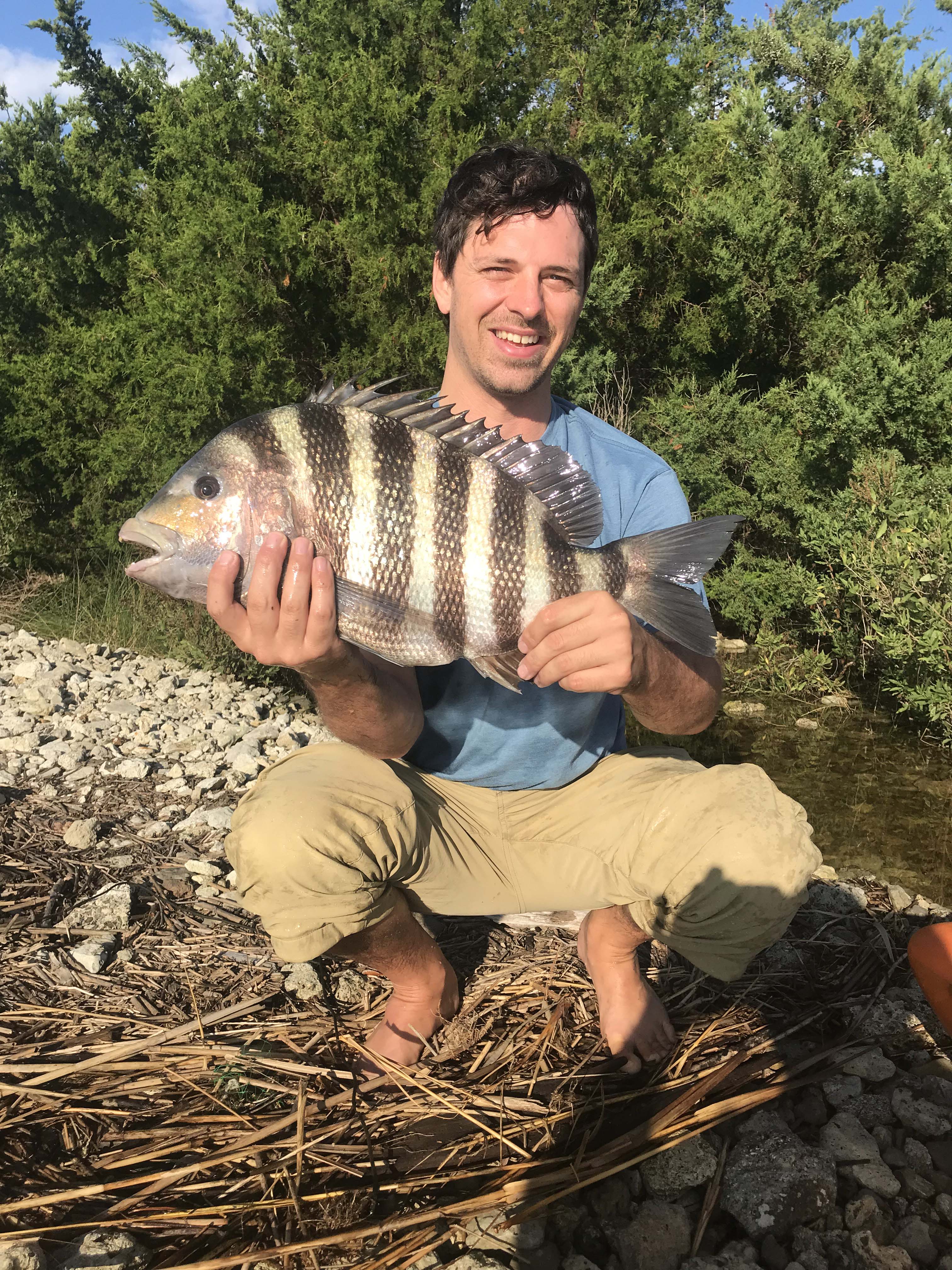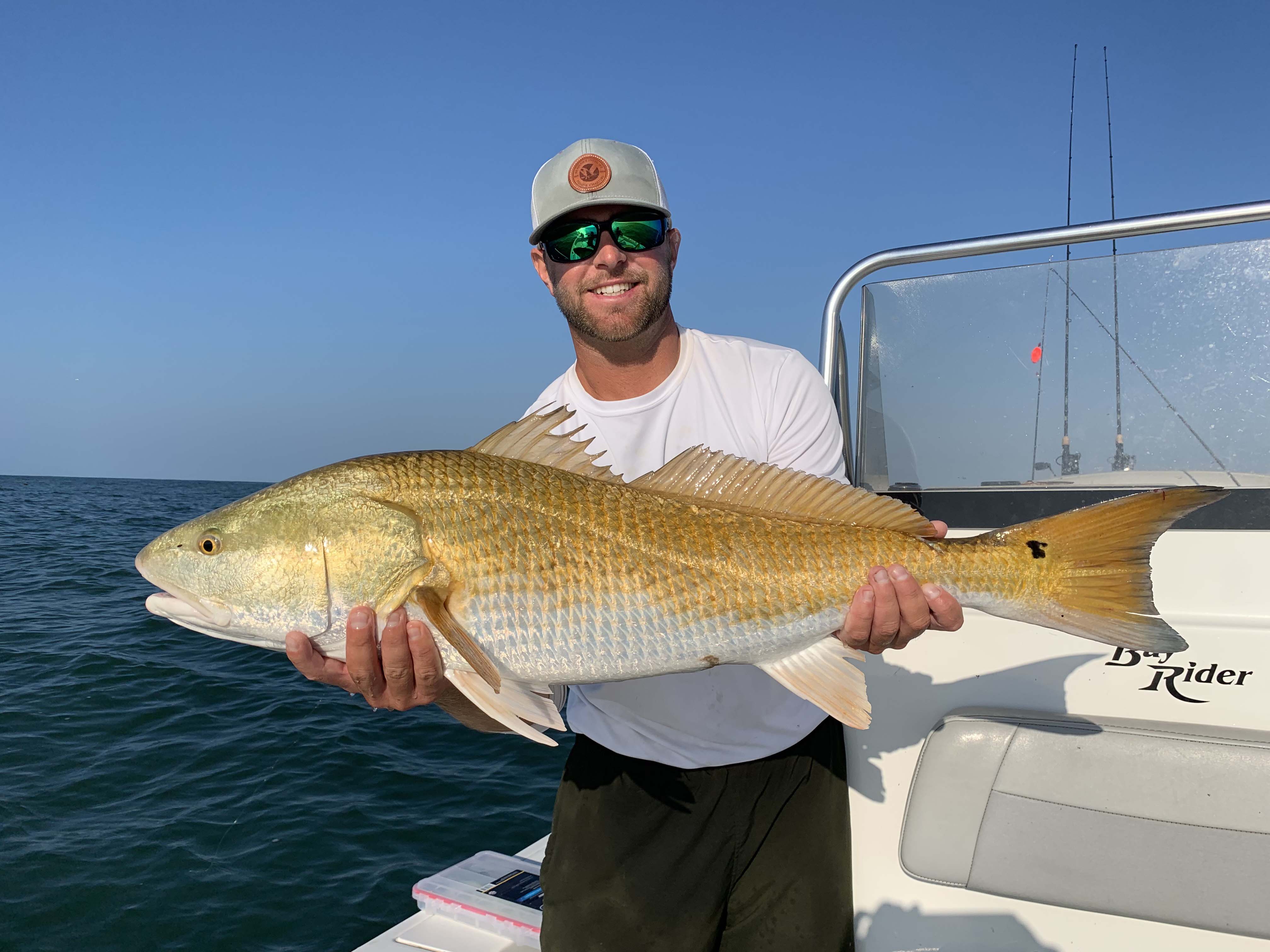Carolina Beach – October 24, 2019
Red, of Island Tackle and Hardware, reports that surf fishing has stayed consistent in the Carolina Beach area. Anglers fishing the bottom have hooked up with whiting, red drum, flounder, and bluefish. A mix of fresh shrimp, sand fleas, and cut mullet have worked best.
The inshore speckled trout bite has heated up as the water temperature has fallen. Targeting marsh points and deeper holes with soft plastics rigged on 1/4 oz. jig heads and MirrOlures have worked best. Most of the trout have been in the 15-18” range, but a few fish to 20” have also been landed.
The flounder fishing has picked up along the waterway and in the Cape Fear River. Anglers have landed fish in the 2-5 lb. range. Most of the flounder have fallen for live finger mullet pinned on a Carolina rig. A few redfish have been in the mix with the flounder.
Just off the beach, the spanish and false albacore have been schooled up tight. Trolling Clarkspoons near bait pods, as well as casting jigs at busting fish, have both produced plenty of action. Some spanish landed have pushed the 5 lb. mark.
The king bite also remains strong just off the beach. Slow trolling live bait around nearshore structure has landed plenty of fish.

Glyn Byrd with a sheepshead caught on a fiddler crab while fishing in the Cape Fear River.
Christian, of Seahawk Inshore Fishing Charters, reports that the red drum action has been slow. Most have been small with only a handful of slot fish mixed in. The reds are falling for dead shrimp and live finger mullet Carolina-rigged or on jig heads.
Black drum have been plentiful, but with only a few keepers. Most of the black drum are in the 13-14” range. Dead shrimp on the bottom around the lower tides has been the best bait/technique.
Speckled trout are falling for artificials and live shrimp. The trout have been in the 16-17” range, with some nicer fish mixed in. The cooler days seem to produce the better bites.
There are still a few citation red drum cruising the beaches along the nearshore wrecks. Live or cut bait on the bottom works best for the big reds.

Capt. Christian Wolfe, of Seahawk Inshore Fishing Charters, with an over-slot red drum caught off of Fort Fisher on a soft plastic paddletail.
Luke, of Spot On Charters, reports that fishing has been getting better by the day, with the lower Cape Fear River (south of Snow’s Marsh) producing plenty of fish. Flounder in the 3-4 lb. range are common, and there are definitely some bigger fish hugging the bottom, too.
A lot of speckled trout are coming in, though most of them have been small. A sunset topwater trip to Carolina Beach Inlet will produce some of the bigger specks.
As for red drum, there are plenty around in all shapes and sizes, including a solid school of 40+” fish that have been swimming through the area recently.
For all three species, look for birds, bait, and signs of life, and you’ll find fish nearby. Carolina-rigged mullet is still the go-to bait for everything, though the mullet have been sparse in the lower Cape Fear. If you want to use live bait, it’s best to find it in the ICW before moving to the river to fish.
Luke, of Coastline Fishing Charters, reports that speckled trout fishing has really turned on. The specks are feeding well on a variety of different baits and lures. As for bait, the best technique would be shrimp under a cork, but they are also taking interest in live finger mullet on a cork or on a long-leadered Carolina rig. As for artificials, topwater baits early and late in the day are producing good numbers, and Z-Man shrimp on a Blue Water Candy jig head is a great tactic as well. In addition, assortments of MirrOlures are also getting the specks’ attention.
The best places to look for trout are around creek mouths, in deep holes, and near oyster bars.
There has been a decent red drum bite for anglers in the process of trout fishing. Topwater baits and Z-Man products have worked well for the reds, as well as Vudu shrimp. The reds are feeding on Carolina-rigged cut baits around docks and oyster bars, but fresh shrimp will also produce.
Black drum are biting in the same areas.
There are still some spanish mackerel and false albacore along the beach. Trolling Clarkspoons is an easy way to target these fish. The spanish and albies are also taking an interest in casting jigs, such as Stingsilvers, early and late in the day.
Rod, of OnMyWay Charters, reports that just off the beach, there are large spanish, false albacore, and bluefish that have been feeding well. Trolling Clarkspoons, as well as casting to busting fish, has produced plenty of action. Many larger spanish (in the 3+ lb. range) have been in the mix.
The nearshore king bite is still steady. Trolling with live bluefish around nearshore structure has generated plenty of quality fish.
Kings have been holding well, with the highest numbers coming from the 5-12 mile range. Most of these fish have preferred slow-trolled live baits, but dead cigar minnows have produced as well. The kings have ranged from 8-30 lbs.
In the 20-32 mile range, there has been a decent mahi bite. Anglers fishing near weed lines and structure have found the most success.
On the bottom between 20 and 40 miles, the bite has picked up. Beeliners, pink snapper, grouper, and triggerfish have all been boxed.
Out at the Gulf Stream, the wahoo bite has provided plenty of action. Anglers starting to fish closer in and not overshooting the wahoo, though, have found the best numbers of fish. Looking for rock piles and ledges between 130-220′ of water has been the ticket for finding the wahoo. A mix of sailfish, blackfin tuna, and mahi have also been landed while at the Stream.
Woody, of Kure Beach Pier, reports that king fishing has picked up from the end of the pier. Anglers have also hooked good numbers of spanish when plugging with Gotcha plugs and throwing Stingsilvers.
Those fishing the bottom with fresh shrimp and sand fleas have landed whiting, black drum, and flounder.





